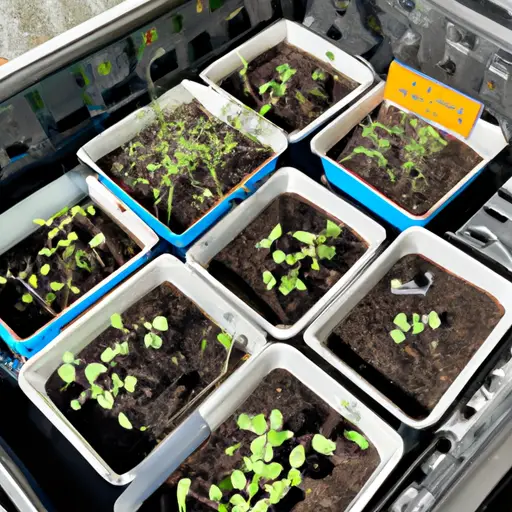Mastering Microgreens and Baby Vegetables with Container Gardening
Container gardening has become increasingly popular among urban dwellers looking to grow their own food. With limited space, container gardening provides a practical solution for those who wish to cultivate fresh produce at home. One particular aspect of container gardening that has gained significant attention is the cultivation of microgreens and baby vegetables. These small, yet highly nutritious plants are not only visually appealing but also pack a punch in terms of taste and health benefits. In this article, we will explore the world of microgreens and baby vegetables and discuss how you can master their growth using container gardening techniques.
What are Microgreens and Baby Vegetables?
Microgreens are young vegetable greens harvested when they are just a few inches tall. They are packed with intense flavors and have vibrant colors, making them an attractive addition to any dish. On the other hand, baby vegetables refer to fully mature vegetables that are harvested before reaching their typical size. Both microgreens and baby vegetables offer a concentrated dose of nutrients in a compact form.
Advantages of Growing Microgreens and Baby Vegetables in Containers
One major advantage of growing microgreens and baby vegetables in containers is the ability to control their environment. By utilizing containers, you have complete control over factors like soil quality, water quantity, sunlight exposure, and temperature. This enables you to provide the optimal growing conditions for these delicate plants.
Additionally, container gardening allows flexibility in terms of space utilization. Regardless of whether you live in an apartment or have limited outdoor space, containers can be placed on balconies, patios, or even window sills – as long as they receive enough light for growth.
Choosing the Right Containers
When it comes to selecting containers for growing microgreens and baby vegetables, there are several factors to consider. Firstly, ensure that the containers have adequate drainage holes at the bottom to prevent waterlogging which can lead to root rot. Selecting containers made from materials like plastic or terracotta is ideal, as they are lightweight and provide good airflow to the roots.
It is recommended to choose shallow containers as microgreens and baby vegetables have shallow root systems. This prevents excessive moisture retention and allows plants to absorb nutrients efficiently.
Selecting the Right Soil Mix
A well-draining soil mix is crucial for the successful growth of microgreens and baby vegetables. A mixture containing equal parts of peat moss, vermiculite, and perlite is an excellent choice. This blend provides good drainage, aeration, and retains moisture without becoming waterlogged.
Sowing Seeds and Germination
Before sowing seeds, it is essential to soak them in water for a few hours to promote germination. Sow the seeds evenly on top of the soil mix. Ensure that you do not overcrowd the seeds to prevent competition for resources.
Cover the seeds with a thin layer of soil mix or wet newspaper to keep them adequately moist during germination. Lightly mist the surface with water using a spray bottle until germination occurs.
Caring for Microgreens and Baby Vegetables
Light is crucial for the proper growth of microgreens and baby vegetables. Place your containers in an area where they receive at least 4-6 hours of direct sunlight each day. If natural light is limited, consider using artificial grow lights to supplement their needs.
Watering should be done carefully by keeping the soil moist but not waterlogged. Overwatering can lead to fungal diseases, while under-watering can hinder growth. Use a watering can with a fine rose attachment or a spray bottle to ensure gentle watering.
Harvesting Microgreens and Baby Vegetables
Microgreens are typically ready for harvest within 7-14 days after sowing when they have developed their first set of true leaves. Use sharp scissors or clean gardening shears to snip just above the soil surface.
Baby vegetables can be harvested when they have reached about half their typical size. Gently pull them out from the soil, avoiding damage to the roots.
Incorporating Microgreens and Baby Vegetables into Your Diet
Now that you have successfully grown microgreens and baby vegetables, it’s time to enjoy their flavors and benefits. These nutritious plants can be added to salads, sandwiches, wraps, smoothies, or used as a garnish for various dishes. Their versatility allows you to explore different flavors and experiment with creative recipes.
In conclusion, mastering the art of growing microgreens and baby vegetables through container gardening is a rewarding experience. From selecting containers and soil mixtures to sowing seeds and harvesting, this method allows for complete control over growing conditions in limited spaces. By incorporating these fresh greens into your diet, you can elevate your meals both visually and nutritionally. So why not give container gardening a try and unlock the potential of microgreens and baby vegetables?













